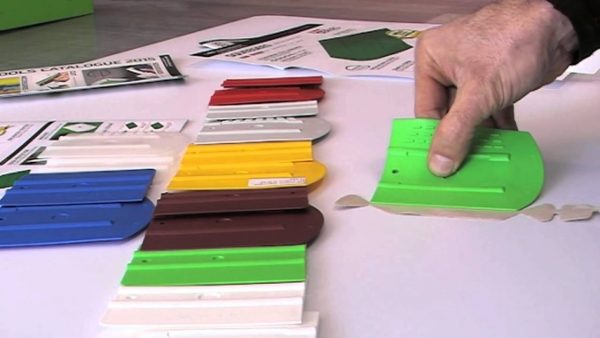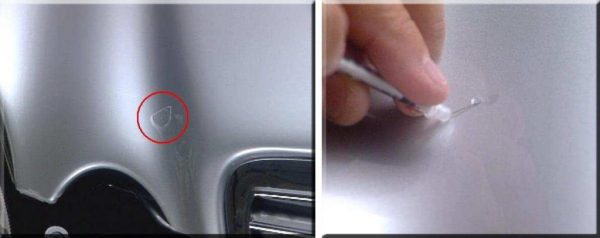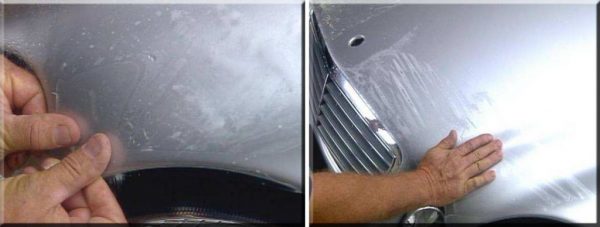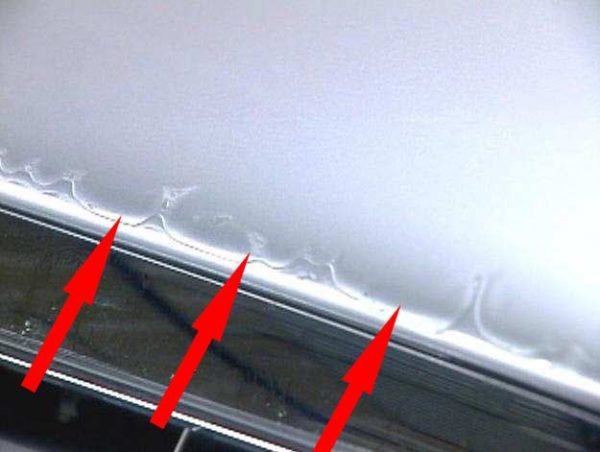
Protective film on a car: why you should glue it yourself
Content
The car is constantly exposed to the negative effects of external factors, as a result of which scratches, chips and other damage appear on the body. To ensure its reliable protection, there is a large selection of films on the market that cover the entire body or its individual elements. You can stick it yourself and thus protect the paintwork from damage and corrosion.
What is a protective film, what is it and what is it for?
Based on the name, it becomes clear that such a film is designed to protect the car from damage. In addition, it performs a decorative function.

Protective film for cars can be of several types:
- vinyl, has an affordable price and a large selection, but does not protect the car very reliably. Its thickness is up to 90 microns;
- carbon fiber - one of the types of vinyl film;
- vinylography - a film on which pictures are printed;
- polyurethane, it is stronger than a vinyl film, but it does not retain its shape well and is not suitable for pasting spherical surfaces;
- anti-gravel - reliably protects the car from damage by sand and gravel. The thickness of the film is up to 200 microns, while the thickness of the paintwork is 130–150 microns.
How to glue a car and its parts with a protective film with your own hands
Before you start pasting the car with a protective film, you need to wash it well, remove traces of insects, bituminous stains, etc. If there are scratches, they must be polished. Work is carried out in a clean room, at a temperature of 13-32ºС.
Necessary tools and materials:
- clothing, it should not be woolen so that particles of fabric do not fall under the film;
- film;
- soap and alcohol solution;
- rubber blades;
 To smooth the film, you will need rubber squeegees.
To smooth the film, you will need rubber squeegees. - stationery knife;
- lint-free napkins;
- insulin syringe.
After the car has been washed, the room and the necessary tools have been prepared, you can begin the process of pasting it. Vinyl and polyurethane film are glued almost the same, but the first is thinner, so it is easier to paste over parts of complex shape with it. The polyurethane film is thicker, so it is easy to stick on flat areas, and it may need to be trimmed on bends.
Work order:
- Film preparation. It is necessary to make a pattern on the pasted part. To do this, the film with the substrate is applied to the part and carefully cut with a knife, passing the knife into the gaps. If the pasted area has no restrictions in the form of gaps, then masking tape is used as marks, which is glued to the body.
- Preparing the place for applying the film. To do this, it is moistened with soapy water.
- Film application. It is laid on the pasted part and positioned along its edges or in the center. The film is heated with a hair dryer to a temperature not exceeding 60ºС.
- smoothing. This is done with a squeegee, which is held at an angle of 45-60º to the surface. We must try to expel all the water and air from under the film. If a bubble remains, then it is pierced with a syringe, a little isopropyl alcohol is let in and everything is pulled out of the bubble.
 The bladder is pierced with a syringe, a little isopropyl alcohol is injected and everything is pulled out of the bladder.
The bladder is pierced with a syringe, a little isopropyl alcohol is injected and everything is pulled out of the bladder. - Film stretching. This is done on bends and complex surfaces. The opposite edge must be well fixed with an alcohol solution. You can stretch the film up to 20% of its size, it is not recommended to do this more.
 The film can be stretched up to 20% of its size
The film can be stretched up to 20% of its size - Curve shaping. The folds on the bends are first moistened with an alcohol solution, smoothed out with a hard squeegee, and then with a towel.
 The folds are moistened with an alcohol solution and smoothed out with a hard squeegee.
The folds are moistened with an alcohol solution and smoothed out with a hard squeegee. - Cutting edges. Do this with a knife carefully so as not to damage the paintwork.
- Finishing the wrapping. An alcohol solution is applied to the glued surface and everything is wiped with a napkin.
During the day, the glued parts cannot be washed, you must wait until the glue sets well. If necessary, the anti-gravel film can be polished with a wax polish. Abrasive pastes must not be used.
Video: do-it-yourself hood pasting
Painting or pasting, which is more profitable
Anti-gravel armored film will last for 5-10 years. It is thicker than the factory paintwork and reliably protects it from damage. If you completely paste over the car with such a film, then you will have to pay about 150-180 thousand rubles in the cabin. If you protect individual sections, then the cost will be less. It is very difficult to paste over a car with polyurethane armored film on your own.
Vinyl film is thinner, and on complex elements where it is stretched, its thickness decreases by another 30-40%. Its choice is wider, and pasting is easier than with a polyurethane film. The cost of a full wrapping of a car will cost about 90-110 thousand rubles. The service life of a vinyl film is less and is 3-5 years.
High-quality car painting also requires a lot of money. You can do everything right only at a specialized station, where there is a chamber with the ability to adjust the air temperature and equipment. The price starts from 120-130 thousand, it all depends on the materials used.
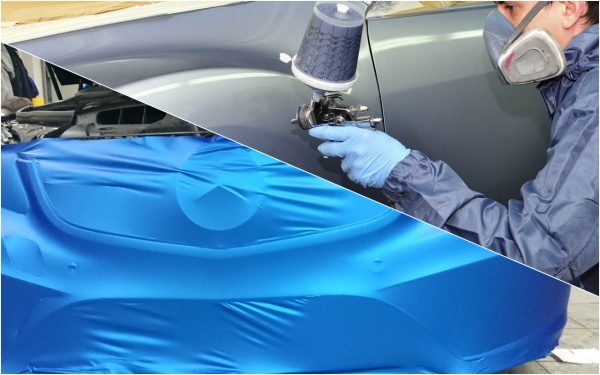

During preparation for painting, you will have to remove a lot of attachments, and this takes a lot of time. The thickness of the paint layer will be greater than that of the factory coating and is about 200-250 microns. The advantage of painting is that there is a thicker layer of varnish, so several abrasive polishes can be done.
You can't paint a car on your own. If you choose between painting and vinyl, then the first option has a longer service life. If you wrap some parts with vinyl film, then it will cost less than painting them. In the case of gluing the entire body with vinyl, the price is comparable to its painting. High-quality painting will serve no less than the factory coating.
Video: which is more profitable, painting or pasting with a film
Reviews of motorists who have completed the fitting
To be honest, I get glued at a price higher than local painting rates, and I will say that it is so pulled and it becomes so thin that every joint and chip is more visible than without it. But the main aspect is that outbids do not glue such a film too expensive, so they glue it cheap and all the minuses that are described above are the same case and there are no pluses for such a film, except for the price.
I believe that an adequate person will not wrap a body element in good condition in a film. Moreover, every sane person understands that this is bad manners and will prefer traditional repairs (for themselves). The armor film on the hood, as far as I know, does not cover it entirely, and the transitions are very visible precisely because of the thickness of the film. Although it is really effective and I would think before giving it up when buying a new car.
From my own experience… We shot a film from the Patrol (the car was covered with a completely yellow film) The film was 10 years old for sure! It was difficult to shoot on vertical surfaces with a hairdryer, but in principle it was normal ... But on horizontal surfaces, as soon as we didn’t conjure))) they set it in the sun, and warmed it with a hairdryer, and just scratched it with nails ... the result was one for “zero point five tenths of a mm “It went away ... then the truth began to be poured with boiling water, then things went much better ... in general, they ripped off! There is some glue left in some places. They tried to scrub everyone in a row, just because he didn’t want to give up ... In short, they courted this Patrol for a week ...
I had a film on my nose everywhere for 2 years on a white accordion coupehe American, bumper, under the handles, thresholds, etc. On the nose 3 times saved from super chips with gravel on the highway. It was the film that was scratched, and underneath it was a whole metal and coloring. Under the handles, I’m generally silent, what happens. The film was installed in the states as soon as I bought the car, the thinnest one (they said it’s better from burnout, etc.). As a result, what we have, when the kupehu was selling, the films were removed (the buyer, of course, was worried about the brokenness, etc.). No yellowing, fading paintwork! The car was always in the parking lot under the house, the conditions are the most ordinary, as you know. During the period of operation, she helped me out more than once (the bite of a dog that flew under the bumper, etc., no matter how ridiculous it sounds), she took over everything, her darling (film). After that, I put family cars on all cars and have no regrets at all. They put a new one on the sportage for my wife, right there in the parking lot, someone rubbed it, removed the film, everything is whole under it, otherwise it would be easy to stain.
Wrapping a car with a film is a solution that allows you to protect it from damage and decorate the appearance. The cost of wrapping a car completely with polyurethane armor film will be twice as high as painting it or using a vinyl film. The last two options are almost the same in cost, but the life of the paint is longer than that of the vinyl film.


